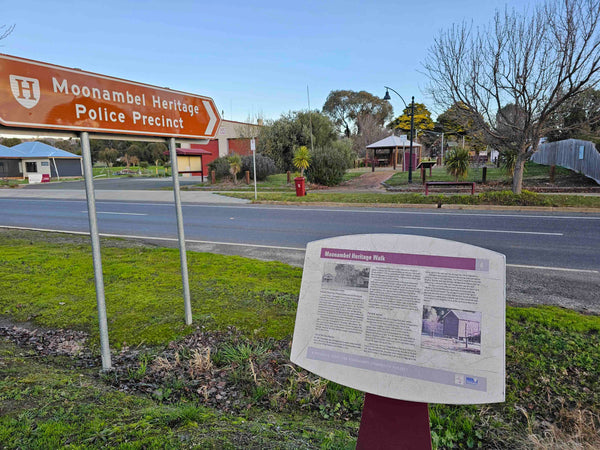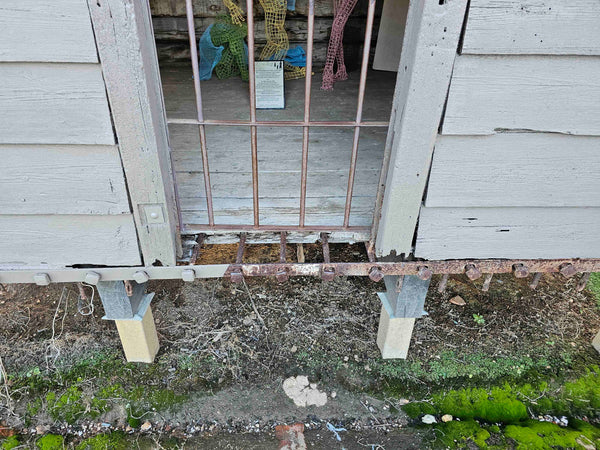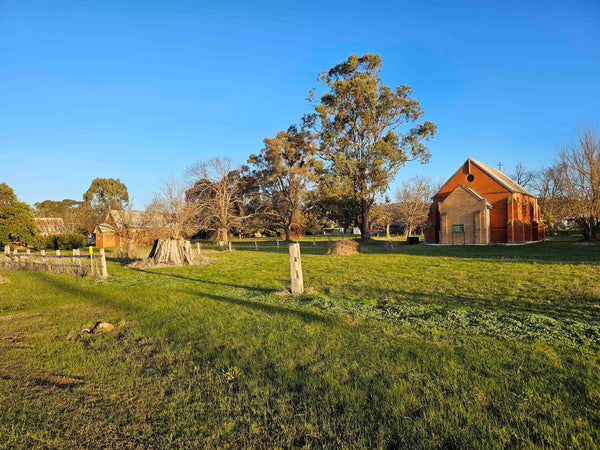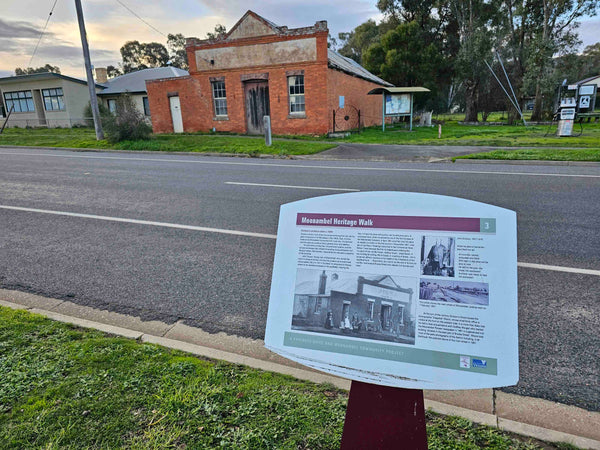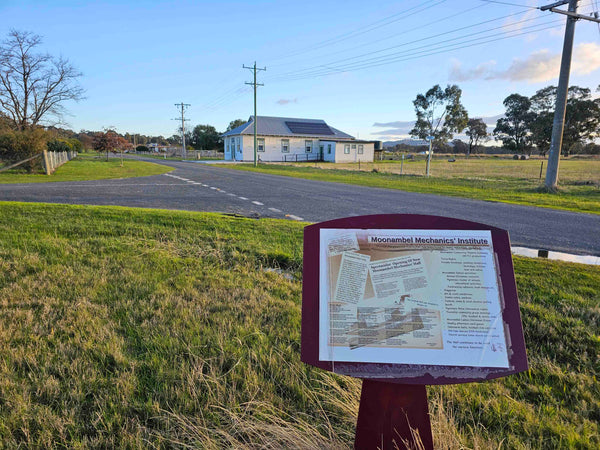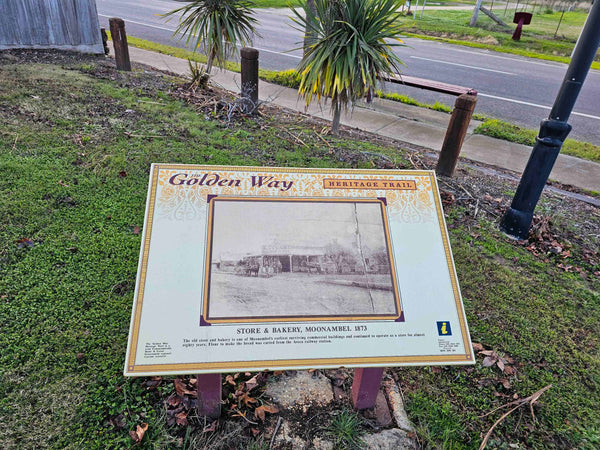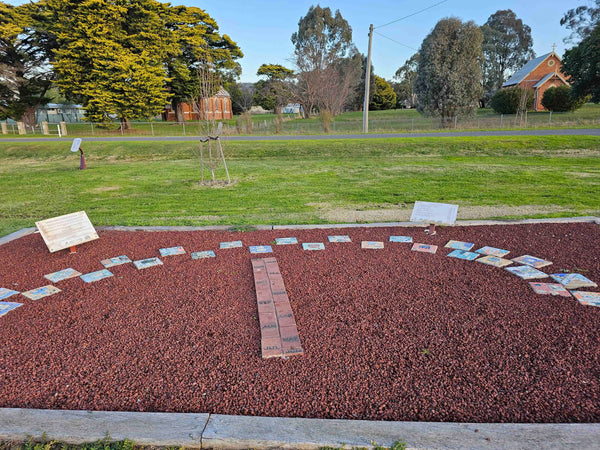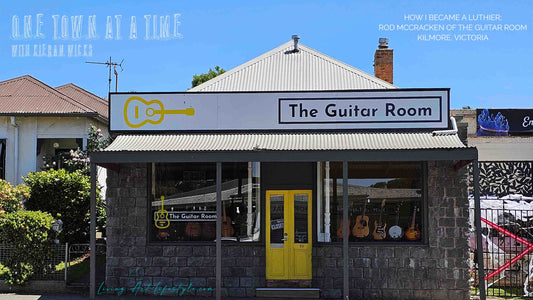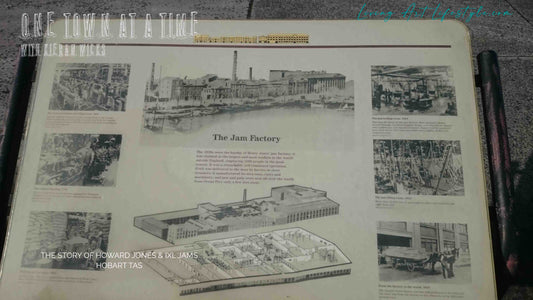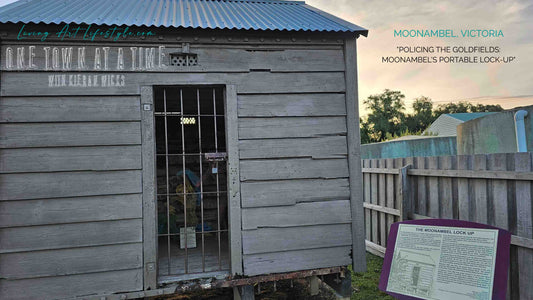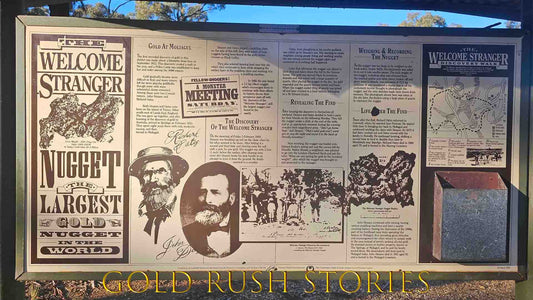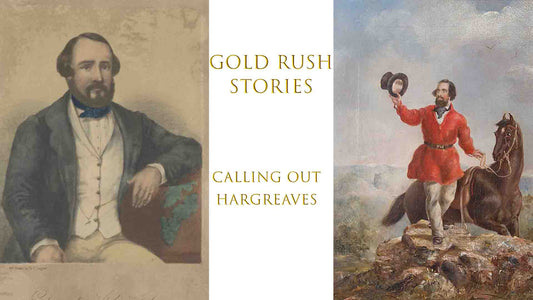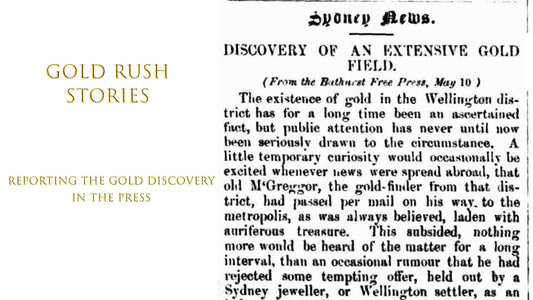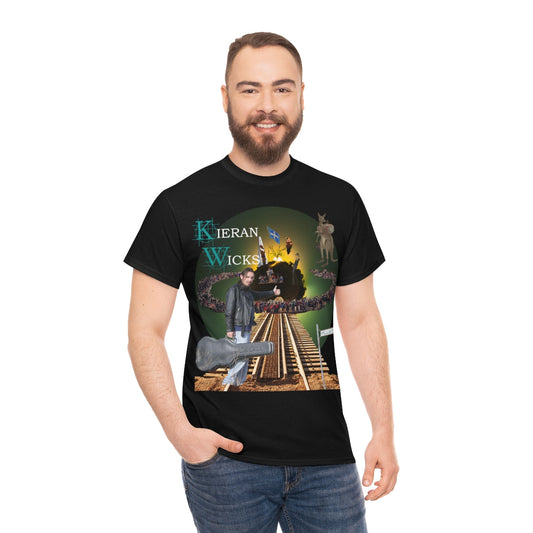
Moonambel, a quaint town nestled in Victoria's scenic landscapes, may be known today for its verdant vineyards and gourmet offerings, but its roots run deep into the heart of Australia's famed Gold Rush era. The town's history is as rich and shimmering as the precious metal once sought after in its soils. This blog post invites you on a journey back in time to explore the golden allure of Moonambel and the policing activities that shaped its narrative.

The Rush for Gold: In the mid-19th century, news of gold discoveries in Victoria spread like wildfire, drawing prospectors from far and wide. Moonambel, with its promising terrains, soon found itself in the eye of this golden storm. Thousands flocked to the area, transforming the once quiet region into a bustling hub of activity. Tents dotted the landscape, picks and shovels became common sights, and the dream of unearthing a fortune became the shared goal.



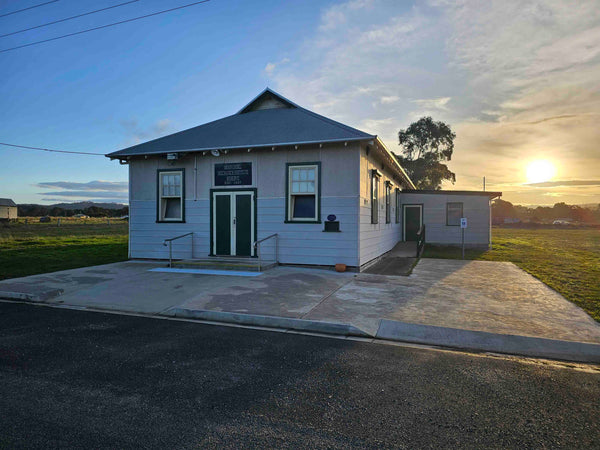 Moonambel’s Significance: While larger towns like Ballarat and Bendigo stole the limelight in terms of gold yield, Moonambel had its unique appeal. The gold here was often alluvial, meaning it was found near the earth's surface in rivers and creeks, making it accessible for solo prospectors and small groups. This encouraged a sense of community and camaraderie among the miners.
Moonambel’s Significance: While larger towns like Ballarat and Bendigo stole the limelight in terms of gold yield, Moonambel had its unique appeal. The gold here was often alluvial, meaning it was found near the earth's surface in rivers and creeks, making it accessible for solo prospectors and small groups. This encouraged a sense of community and camaraderie among the miners.

Historic Precinct: Police-camp reserve & lockup.
...a man living in Moonambel for any length of time would be a candidate for a lunatic asylum Constable Dunn reported in 1915 at the closure of the Moonambel police station. As the swirling tides of gold miners swarmed into Moonambel in 1861 the drunk, the disorderly, the embezzler, the thief or vagrant required the establishment of a police camp. It was a costly gamble setting up government camps deserted as thousands of miners and their attendant shopkeepers the diggings as they might suddenly be and assorted harpies would precipitate themselves into the wilds.
Moonambel's police camp was set out on this spot in the centre of the main thoroughfare in December 1860/January 1861. The original police station and residence is across the road at the front of the reserve (now, the Moonambel Common) and one of the heritage classified 'rare early portable lockups' is preserved at the back of the precinct.
By 1865, Moonambel had consolidated into a modest mining township and it still acted as the administrative centre for the surrounding locality with a Court of Petty Sessions and a Warden's Court. The Courthouse was built in 1881 adjacent to the police station. Cited as the most well-travelled courthouse in the State it was moved in 1953 to Landsborough West and then to Stawell.
Both the relocated courthouse and the original police station seen here are still in use as private homes. However, in the rough and tumble of the early discoveries, miscreants were brought to Court sittings at the Commercial Hotel. The 27 year-old Reynell Everleigh Johns, described as the Solomon of Moonambel and cousin of the famous Reynell family of winemakers in SA, was the Clerk of Petty Sessions at the time walking from court to court at Landsborough, Avoca and Moonambel. Self-educated and inquisitive about exploring the new world, remarkably, he left a legacy in the form of one of the earliest collections of indigenous artefacts-known today at the Burke Museum Beechworth as the 'Moonambel Collection. One of his early taxidermy 'successes', using arsenic and horse hair to stuff the skins, was a Tasmanian Tiger!
Portable lockup At the time that the 1883-1914 Charge Book was written, Moonambel boasted a police station, a courthouse, lockups and a storage shed. Of the three original lockups, one remains.
The lockup design, unique to the goldfields, is a small transportable metal cage clad in timber constructed for transportation to follow the moving population of miners. Moonambel's lockup is rare. This very early type was carted on drays or rolled from place to place on logs. It has architectural interest for its solid timber construction, with steel bars running through the walls, ceiling and floor.
There is no record of who went through the lockup during the peak of the gold rush. Unfortunately, the first Charge Book is missing so there is no rush fever at Moonambel However, what remains reflects what it was like for some of the people who lived on at the diggings in the fading days of the rush and then through the 1890s depression. Offenders were mostly housed in the lockup overnight before coming in front of the magistrate. The Police Charge Book includes English, Russian, Irish and Chinese offenders and Indians such as Ardet Sing, a labourer, who was charged with drunkenness.
The most common offences were 'drunk and disorderly and 'vagrancy' but embezzlers got a guernsey, so did prostitutes, as well as the odd lunatic! The youngest to spend the night in gaol was one-year-old Constance Palmerston: 'found wandering and having no settled place of abode' and whose sentence was: 'Committed trial at Supreme Court in the criminal jurisdiction at Ballarat.

Policing the Gold Fields: With the influx of gold seekers came inevitable challenges. Claim disputes, theft, and lawlessness became prevalent. Recognizing the need for order, authorities soon set up a policing system specifically for the goldfields.
- The Goldfields Commission: Policemen were appointed to maintain law and order in the area. They were responsible for overseeing mining activities, settling disputes, and ensuring that miners had valid licenses.
- License Hunts: To mine in Moonambel, one needed a license. Policemen regularly conducted checks, and those found without a license faced hefty fines or even imprisonment. These hunts, however, weren't always received well, leading to tensions between the miners and the police.
- The Camp: In Moonambel, as in other goldfield towns, there was a central camp where the police and officials resided. This camp was not just a base for the authorities but also served as a court and a place for community gatherings.
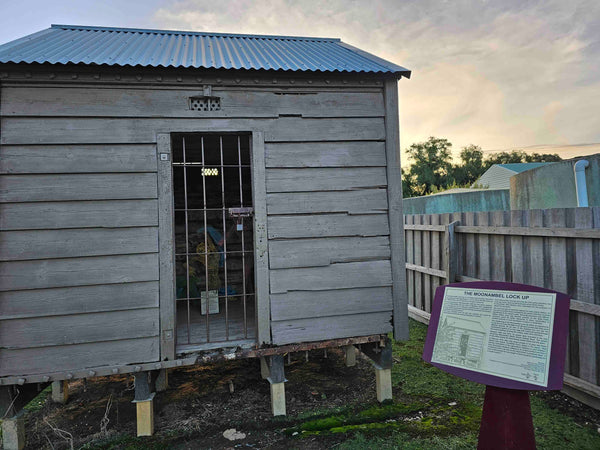
THE MOONAMBEL LOCK UP
The Moonambel Lock Up is a heritage listed building described ‘as a place of local significance’. lt is an ‘Early Portable Lock Up ¢ 1860s/1870s, one of only five of its type in existence.
It was recorded on 10th December 1860 that two police stations, one at Moonambel and the other at Redbank were established ‘in consequence of an extensive goldfield with a population of about 30,000 having been opened and two townships having been established at those places.’
The Early Portable Lock Up was free standing and could be dismantled to follow the moving population of miners. Early Moonambel records describe the first police quarters, two Lock Ups and a shed as being located at the Police Camp.
In December 1863 tenders were advertised for the provision of rations for prisoners.


The Lock Up was an essential adjunct to every police station, its role was to confine those arrested by the police until they could be transferred to the nearest gaol.
Securing prisoners was difficult. Before timber Lock Ups became popular on the Gold Fields, prisoners could be either manacled to trees, handcuffed to another prisoner or Lock Up keeper or kept in a small tent.
The weathering of the Moonambel Lock Up offers an opportunity to see how an Early Portable Lock Up was constructed; they were effective prisons. At the rear of the building you can see the containment system of an iron cage with metal rods going through the wood cladding covering the ceiling, walls, floor and door.
Between 1883 and 1914, 53 people were recorded in the only remaining Moonambel Watch House Charge Book.
In February 1915, after only seven arrests in 14 years the Police Station was closed. Constable Dunn stated in his report, “Now that the collections of the agricultural statistics is (sic) finished | have absolutely whatever nothing to do at Moonambel and find it
a hard job to fill in my time as the place itself is positively dead. A man in Moonambel for any length of time would be graduating for a lunatic asylum.”
Sources:
Melbourne Police Archives
Pyrenees Heritage Study.
Police Building in Victoria: A survey
The Repair of and an interpretive proposal for the Moonambel Lock -Up — DSE Nov 2003
‘The Argus’ February 9th, 1915
The Goldfields Police:
With the rapid influx of people and wealth into the region came a pressing need for order and security. The Goldfields Police played a crucial role in maintaining law and order during the gold rush. They patrolled the diggings, enforced mining regulations, and quelled disputes, often through the strict and sometimes controversial enforcement of the law.
The relationship between the miners and the Goldfields Police was complex, characterized by a delicate balance between maintaining order and respecting the rights and livelihoods of the miners. Their presence, marked by distinctive uniforms and badges, was a constant reminder of the authority of the colonial government.


Legacy of the Gold Rush and Policing: While the frenzied rush for gold has long passed, its legacy remains ingrained in Moonambel. The old police camp, remnants of mining tools, and tales of legendary finds serve as reminders of a bygone era. Moreover, the policing activities, though sometimes seen as oppressive, played a pivotal role in shaping the town's social fabric, instilling a sense of order and community.
Today, visitors to Moonambel can delve into this rich history through guided tours, local museums, and heritage sites. The old goldfields, now reclaimed by nature, offer a serene contrast to the bustling activity of yesteryears.
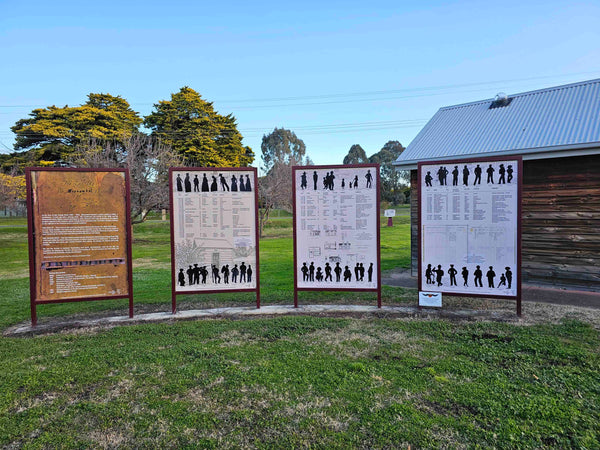
In Conclusion: While the town has transitioned from its gold rush days to become a serene wine region, the legacy of the past endures. Visitors can immerse themselves in this fascinating history, learning about the trials and tribulations of the gold rush era and the essential role of policing on the goldfields.
Moonambel, with its intertwining tales of golden dreams and the rule of law, presents a captivating chapter in Victoria's history. As you sip on the region's fine wines or wander its tranquil landscapes, take a moment to reflect on the echoes of the past, the dreams of fortune-seekers, and the men in uniforms who patrolled these very grounds.






